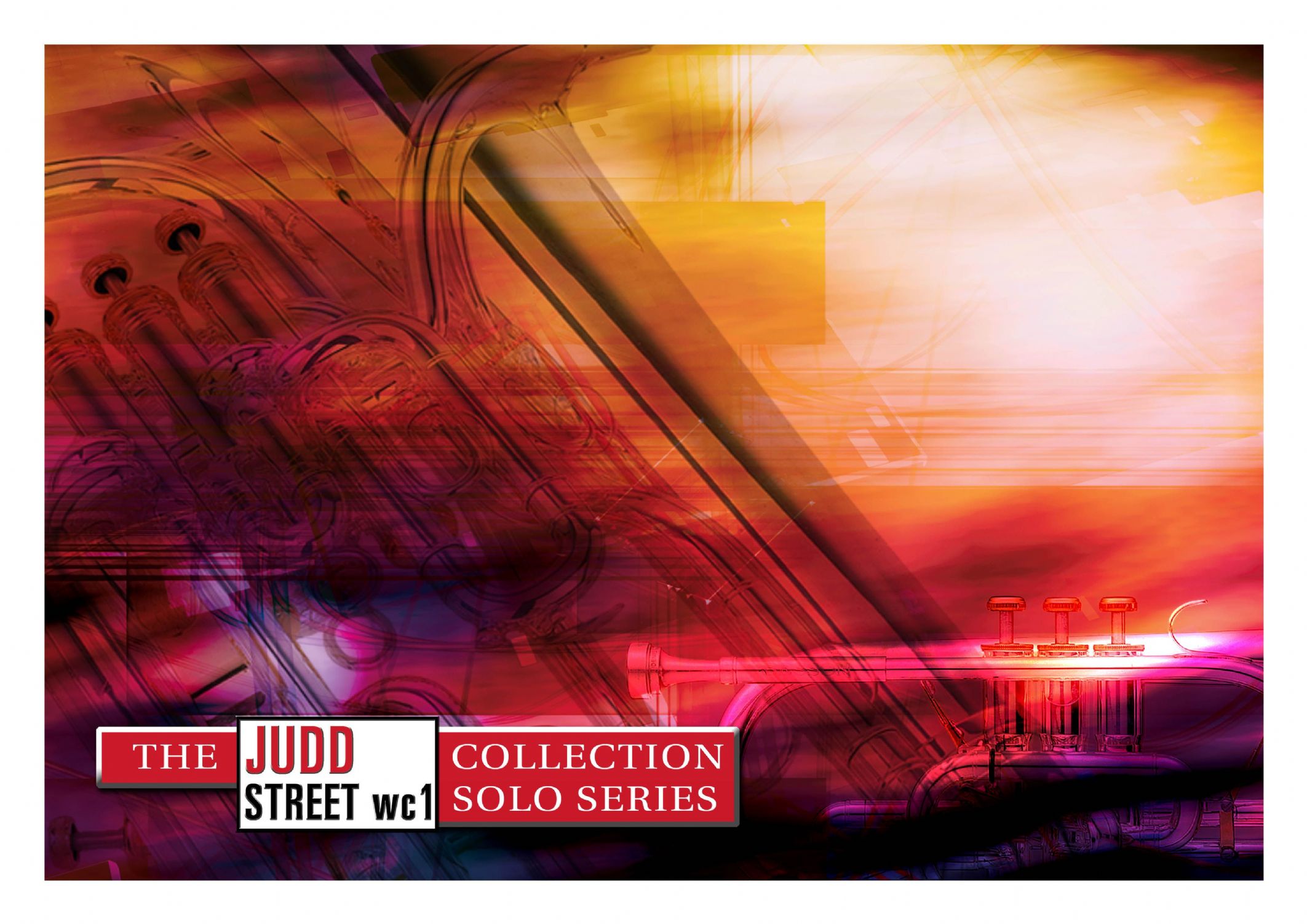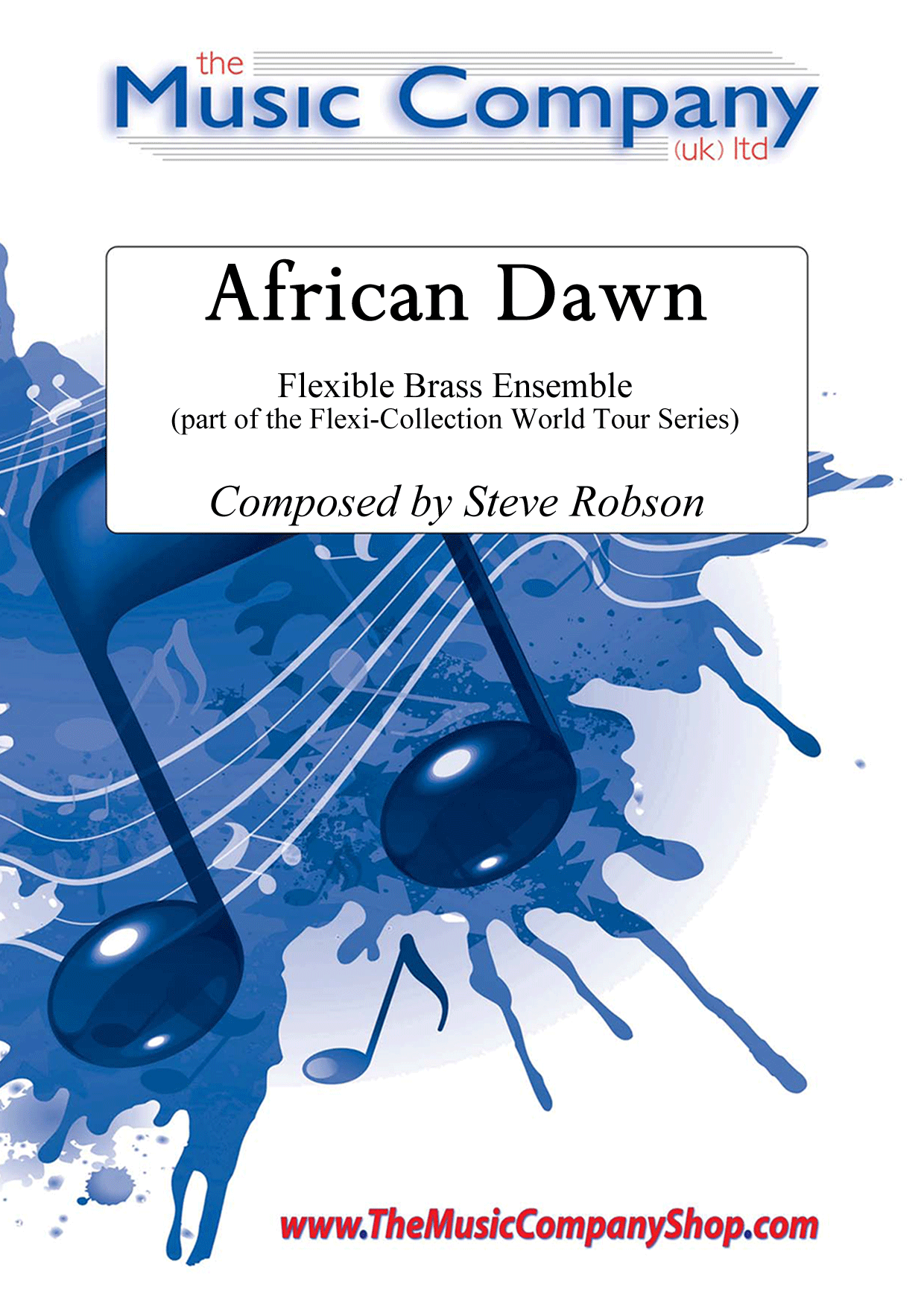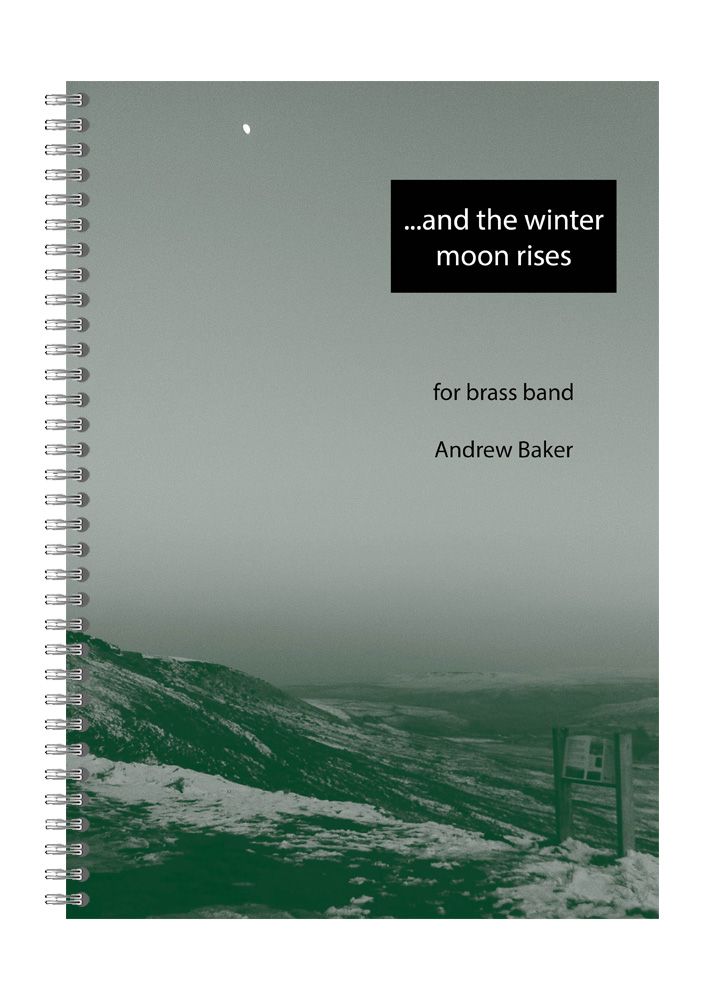Results
-
 £44.95
£44.95Judd: Timepiece
This duet was heavily influenced by the famous euphonium solo, 'Grandfather's Clock' and references to that melody and clock sounds (tick-tock, cuckoo etc.) are plentiful!
Estimated dispatch 7-14 working days
-
 £37.50
£37.50Resurgence - Sam Fisher
Resurgence is a new thrilling work which was composed as the finale for the Carlton Main Frickley Colliery Band's "Great Fire of London" programme which they performed at 'Brass In Concert' 2016. Written in three sections, the work graphically depicts London in its post-fire state, with damaged bells and the ghostly atmospheric sounds. The opening movement entitled, 'Devastation' leads to the rebuild of London town, with "Oranges and Lemons" being heard in short fanfares, eventually arriving at 'New London' which features the iconic "London's Burning" and familiar Westminster Chimes. This is a great showcase for any band looking to impress on both the concert and contest stage.
In stock: Estimated dispatch 1-3 days
-
 £179.50
£179.50Fanfare and Chorale - Egil Hovland
This arrangement (or edition) for brass band will give the possibility for more performances of this fine work by Hovland. The composer, before his death, examined my work and made no suggestions for changes, and his approving comments were complimentary and encouraging. The work was originally written for Concert Band in 1966 as Op. 54a to St. Olaf College Band in the US. It was transcribed in 1967 for symphony orchestra as Op. 54b by the composer himself. The challenges in arranging the piece for brass band were mostly concerned with satisfactorily covering the upper register used by piccolo, flutes and clarinets, and while there are wonderful brass players around who have amazing high registers, I have aimed this edition at a level achievable by reasonably good brass band players who are willing to give time and effort into the proper preparation and delivery of the music. Having worked on this new edition with a top-class brass band, I think it sounds wonderful and interestingly different to the original. Besides the obvious differences of tone-colour and absent high notes, I have used in my scoring, the option for using a vibraphone in place of a celeste. Vaughan Williams, in his Variations for brass band writes for celeste, but because the instrument is quite rare, performances have been mostly given using a glockenspiel- but this, of course sounds two octaves higher than it was intended. I think that vibraphone and brass is an excellent combination and recommend it without hesitation in this piece. Every detail of articulation and dynamic has been considered, so in order to keep the integrity of the music, please do not change anything in the name of "interpretation". As Ravel says- "What is there to interpret?" Ray Farr
Estimated dispatch 5-14 working days
-
 £30.00
£30.00Roots - Lucy Pankhurst
Commissioned by Katrina Marzella in 2008, this modern 'duet' for Baritone and Euphonium soloists with brass band accompaniment has been inspired by 'nature and environment' as its primary muse. The music takes the listener through 7 stages of environmental atmosphere, in its combination of sounds and effects. It is a very uplifting work and with the back-story in mind (see programme notes below), it makes for an incredibly effective concert feature.Programme notes from the composer, Lucy Pankhurst:There are 7 main sections in the piece :RainGerminationGrowthTransionSunshineRainstormRestThe work begins with Rain, symbolised by the rainstick and 'rain sounds' in the brass , which allows the themes to germinate. The 'roots' of the music themselves, are firmly established in the tonic (root Eb) and 5ths in the low brass, from which the solo lines eventually grow, using triads and 5ths.During Growth, the solo baritone and euphonium begin with separate melodies which begin to twist around each other (much like tree roots), interlocking to produce harmonies and counterpoint, complimenting one another and firmly keeping the music in Eb major. Muted cornets and trombones continue to play overlapping semiquavers, reflecting the raindrops as they fall from the trees and leaves.A brief interlude, featuring brass sextet drives the music back to its Germination stage - here, named Transion, as it grows once more, evolving into something new. The Sunshine section is a dance. Moving rapidly through different keys, the warm sunlight catches on the dewy foliage, creating dazzling moments of clarity and beauty.However, the change in conditions also lead to brief moments of uncertainty, as the various creatures tentatively reappear from their shelter to bask as the earth is warmed. Birdsong can be heard in the solo lines as the entire band join in the celebrations.The jollity does not last long, however, as a Rainstorm, more violent than the last , ensues - stopping the dance in its tracks. The tam-tam and bass drum signify thunder, crashing into the music abruptly. However, the music still survives and re-emerges from the storm, delicately but securely establishing itself into a new key (C major), before softly concluding with the two soloists in rhythmic unison as the rain subsides and the world is at Rest.
Estimated dispatch 7-14 working days
-
 £20.00
£20.00African Dawn - Steve Robson
This piece embraces the sounds and imagery of a tribal group out singing on a remote hill top, where individuals sing out a 2 bar phrase and the remainder of their group sing a response. African Dawn brings this vision to life by giving the opportunity for the musicians playing the original "Chant" or "Call" to be positioned as soloists, or just stand up within the main group.There is also the opportunity for lots of percussion to be spread throughout the band and divided into groups, or even groups of people clapping the separate rhythms to bring forth the African atmosphere.African Dawn is part of the Flexi-Collection - World Tour Series.Our Flexi-Collection Series:Flexible scoring tailored to your needs - a perfect solution for expanding the repertoire of Junior/Youth brass bands and ensembles. The Flexi-Collection currently offers two series and these will be regularly expanded to offer groups an even wider variation of music. Based on four-part harmony, these collections provide brass groups with the advantage of complete flexibility when may not be balanced.Added Extras:Each part of The World Tour Series also includes rudimentary theory reference sheet andLearn Together Moments(warm-up passages which relate to each of the styles of pieces included in the whole series). The score also includes background/programme notes andCheck It Outideas to encourage the players to find out more about the music style and/or inspiration behind the piece.If players or instruments are missing, the show can still go on! The thoughtful scoring and arranging by Steve Robson now means that groups of all abilities have access to a truly flexible set of music for their needs.Available for Brass Band (with world parts included), pieces included in our World Tour Series offer flexibility in every sense of the word.(Available individually or as part of the completeFlexi-Collection World Tour Series Album).
Estimated dispatch 7-14 working days
-
 £25.00
£25.00...and the winter moon rises
Description...and the winter moon riseswas inspired by a winter's evening car journey across the Pennines from Manchester to Huddersfield, through the brass band heartland of Saddleworth. There was recent snow on the ground, and the sun had just set. A bright clear moon was rising into a sky coloured with orange from the setting sun, and the moonlight made all the snow and ice sparkle.The work is the fourth movement of a larger 5 movement suite entitled "North!", but can be (and has been) performed in isolation. This work was a finalist in the 2012 Ohio Brass Arts Festival composition competition.Performance NotesThe percussion parts should be playable by three players; the "arco" parts of the vibraphone parts should be played by drawing a cello or double bass bow up the side of the bar. Motors should be left off throughout.Three of the brass players are asked to double on triangles for the first part of the piece; ideally these should be of different sizes giving clearly different sounds. The easiest solution is to tie a triangle to the music stand, rather than try to hold it and then swap instruments later in the piece.Click below to watch a playback preview of the score!
Estimated dispatch 7-14 working days
-
 £45.00
£45.00f/m
Descriptionf/m was inspired by the internet cartoon 'frequency' by the artist Randall Munroe, which can be seen atxkcd.'Frequency' displays a grid of randomly chosen statistical events which flash at the frequency of their real-time occurrence; an outwardly banal idea with surprisingly profound results. f/m (which - predictably - is short for frequency/modulation) takes a similarly random set of time/duration statistics and uses them to generate the note lengths for each instrument. The first four statistics (and the first brass instrument entries) are derived from physical science. The next eight are all related to the natural world. The final ten, for which the cornets are used, represent contemporary human activity. The percussion instruments maintain a "tick and chime" throughout the work. To view a PDF preview of the score click here.The statistics used are as follows, indicated by numbers in brackets in the score at the first iteration of each one:Lightning strikes the earth 100 times per secondThe first pulsar ever discovered, PSR1919+21, pulses once every 1.337 secondsThere are approximately 10 supernovae every 0.95 secondsEvery 0.6 seconds the entire solar system moves 100 miles around the galactic centreEvery 4.1 seconds a 70 kg human emits 1000 gamma rays due to naturally occurring potassiumA blue whale's heart beats once every 6.67 secondsA hedgehog's heart beats 300/min or 5 times a secondEvery 2 seconds the net population of the world increases by 5There is one birth every 0.24 secondsThere is one death 0.56 seconds5.14 people die of malaria every minute ( one every 11.67 seconds)10 kilotonnes of polar ice are lost on average every 1.4 seconds.Walmart's takes in sales revenue of $10,000 every 1.4 secondsEvery 3 seconds there are 60,000 plastic bags used in US supermarketsEvery 0.72 seconds the world uses 500 tonnes of paperEvery 7.65 seconds, South Korea builds a carEvery 1.75 seconds, China builds a carEvery 5.8 seconds, Germany builds a carEvery 4.7 seconds, the USA builds a truckTwo commercial airline flights take off every 1.86 secondsMacdonalds serves 300 burgers every 4 seconds and feeds 787 people per secondStarbucks uses 3 gallons of milk every secondPerformance Notes:All entries are cued by the conductor at his/her discretion. There is no specified minimum or maximum time between entries and no specified overall duration; the times between each new entry do not have to be consistent unless the conductor wishes them to be so. However each player should be allowed time to complete at least one iteration of their note, and preferably to become comfortable with their place in the overall texture - one of the aims of the work is try present dissonant sounds through the medium of the brass band outside the normal performance context, allowing players to find their place in a non-diatonic harmonic matrix without regard for linear motion or developmental activity. Entries should not coincide unless they align vertically on the score. While it is accepted that absolute accuracy is not possible, players should attempt to get as close as they can the the printed duration of their note, and do their best to keep that duration consistent during repetitions. Rests are indicated by empty staves. A continuous line indicates a repetition in progress.Soprano cornet will require a harmon mute. Cornet 1 and Trombone 2 require metal straight mutes. Cornets 5,7,8 and 9 require cup mutes. The work requires three percussionists, playing tubular bells, vibraphone and and egg shaker.Approximate duration 6'00" - 9'00"
Estimated dispatch 7-14 working days
-
£59.99
Centennial Prelude - Jan Van der Roost
This short opening music was composed on commission of the symphonic band of Jan Van der Roost's village (= Kontich near Antwerp / Belgium). In 1991, this community band celebrated its 100th anniversary. After composing commissioned pieces from different countries (even from Japan), this was the most 'near' commission he ever received indeed!It is a short but varied piece, featuring all sections of the band. After a short introduction, played by the brass instruments, a crisp rhythm starts and boxes the main theme. After a second theme, played by brass and percussion, a short melodical passage brings some 'rest'. At the end, the fanfare of the introductionreoccurs.Although this "Centennial Prelude" isn't a really demanding piece, it sounds colourful and energetic. It has been recorded on CD by the band of the 'Royal Dutch Airforce' and the 'Desford Colliery Brass band'.
Estimated dispatch 5-14 working days
-
 £83.99
£83.99Let's Celebrate - Otto M. Schwarz
Following the successes of "Last Call," "Funk Attack," and "Funky Brass," Schwarz once again presents a bold fusion of pop and funk, pushing the boundaries of the orchestra world.Let's Celebrate" captures the essence of modern orchestra music, blending traditional instrumentation with contemporary sounds. Immerse yourself in a captivating celebration of music and discover Schwarz's latest masterpiece that is sure to captivate both your orchestra and audience alike!
Estimated dispatch 5-14 working days
-
 £38.00
£38.00Monteverdi Three Miniatures
"Monteverdi - 3 Miniatures" was composed for the British Open Youth at the Guild 2015 by Adam Taylor. The piece uses small themes from a variety of works by Claudio Monteverdi presented in a modern and (hopefully!) suitable manner for brass band. A few notes on the work: i) Tempos may be adapted to suit your interpretation of the music. ii) The second miniature features a duet. You will find the parts for this duet seperate in both Bb and Eb. Please feel free to choose your own soloists for this section. iii) I have included 3 written percussion parts. Please feel free to add any other suitable percussive sounds if your section is large enough (tambourines, tenor drums, hand bells etc.), or if limited in numbers, do not worry about leaving parts out. iv) Feel free to add any ornamentation you or your players feel suitable and complimentary to the music. v) No sackbut's or Renaissance cornett's allowed. I very much hope you will enjoy playing this piece, and for those in your ensembles who have not yet heard the music of Monteverdi, I hope this piece may serve as a good taster and a fitting educational tool as a small insight into the music of the late Renaissance/ early Baroque period.
Estimated dispatch 5-7 working days
